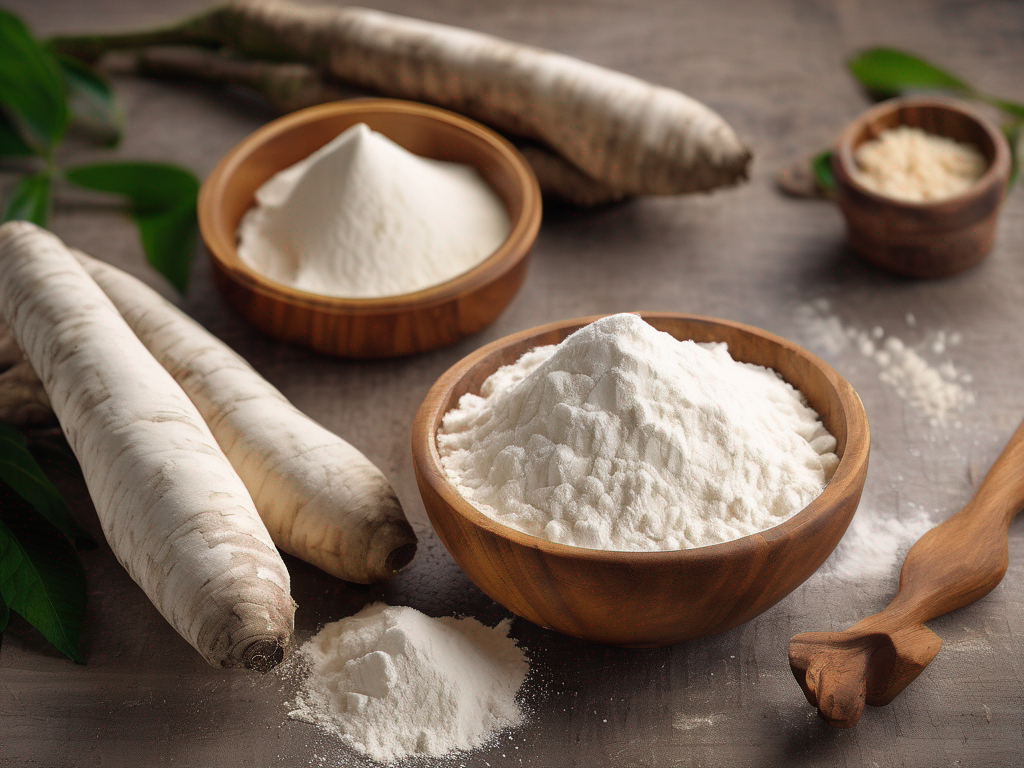
Is Your Cassava Flour Still Safe to Eat? How to Tell if it's Gone Bad
Get Your Free Food Safety Cheat Sheet
30 most common foods with instant answers. Print it and stick it on your fridge—completely free!
Is Your Cassava Flour Still Safe to Eat? How to Tell if it's Gone Bad
Cassava flour is a versatile gluten-free alternative used in various recipes, from baked goods to thickening agents in soups and stews. However, like any other food product, cassava flour can go bad over time, potentially leading to foodborne illnesses if consumed past its prime. In this guide, we will discuss how to determine if your cassava flour has gone bad and is no longer safe to eat. (Cassava flour)
Understanding Cassava Flour
Before diving into the signs of spoilage, let's briefly understand what cassava flour is and how it differs from other types of flour.
What is Cassava Flour?
[Cassava flour](/food/cassava flour) is made from the root of the cassava plant, also known as yuca or manioc. It is naturally gluten-free and is a popular choice for those following a gluten-free or grain-free diet. Cassava flour is high in carbohydrates and is often used as a wheat flour substitute in baking.
Signs of Spoilage in Cassava Flour
To ensure the safety and quality of your cassava flour, it's essential to be able to identify signs of spoilage. Here are some indicators that your cassava flour may have gone bad:
1. Off Odor
- Normal Odor: Fresh cassava flour should have a mild, slightly sweet odor.
- Spoiled Odor: If your cassava flour smells musty, sour, or rancid, it may indicate spoilage.
2. Mold Growth
- Check for any visible mold growth on the surface of the cassava flour.
- Mold growth can appear as fuzzy spots or discoloration, indicating that the flour is no longer safe to consume.
3. Strange Texture
- Fresh cassava flour should have a fine, powdery texture.
- If you notice clumps, moisture, or an unusual texture, it may be a sign of spoilage.
4. Taste Test
- While not recommended, if you are unsure about the quality of your cassava flour, you can perform a small taste test.
- If the flour tastes sour, bitter, or off, it's best to discard it.
5. Expiration Date
- Check the expiration date on the packaging of the cassava flour.
- Consuming the flour past its expiration date can increase the risk of spoilage and foodborne illness.
Proper Storage Tips for Cassava Flour
To extend the shelf life of your cassava flour and maintain its quality, follow these storage tips:
1. Store in a Cool, Dry Place
- Keep cassava flour in an airtight container in a cool, dry pantry away from heat and moisture.
- Exposure to heat and humidity can accelerate spoilage.
2. Avoid Direct Sunlight
- Store cassava flour away from direct sunlight, as UV rays can degrade the quality of the flour.
3. Seal Properly
- Ensure the container or packaging is tightly sealed after each use to prevent moisture and air from entering.
4. Use Freshness Indicators
- Consider using freshness indicators such as silica gel packs to absorb moisture and extend the shelf life of cassava flour.
Conclusion
In conclusion, maintaining the quality and safety of your cassava flour is essential to prevent foodborne illnesses. By being aware of the signs of spoilage and following proper storage practices, you can enjoy your cassava flour in various recipes with peace of mind. Remember to trust your senses and when in doubt, it's best to discard the flour to avoid any potential health risks. (Cassava flour)
Authoritative Food Safety References
These agencies and university labs inform every tip and health precaution we publish.
USDA FoodKeeper – Cold Storage Guidelines
Official refrigerator, freezer, and pantry timelines maintained by the U.S. Department of Agriculture.
Visit USDA FoodKeeperFDA Produce Safety Rule & Grower Guidance
Field-to-fridge handling practices that prevent contamination of fruits, vegetables, and leafy greens.
Visit FDA Produce SafetyCDC Foodborne Illness Prevention Hub
Surveillance-backed guidance on pathogens, symptoms, and steps to reduce foodborne illness risk.
Visit CDC Food SafetyUC Davis Postharvest Technology Center
University research detailing optimal storage atmospheres for produce after harvest.
Visit UC Davis PostharvestPenn State Extension – Home Food Preservation & Safety
Peer-reviewed extension bulletins on safe canning, chilling, and reheating practices.
Visit Penn State ExtensionGet Your Free Food Safety Cheat Sheet
30 most common foods with instant answers. Print it and stick it on your fridge—completely free! Want more? Upgrade to the complete guide with 70+ foods.
Scan your food directly and get instant safety info using our AI-powered camera feature.